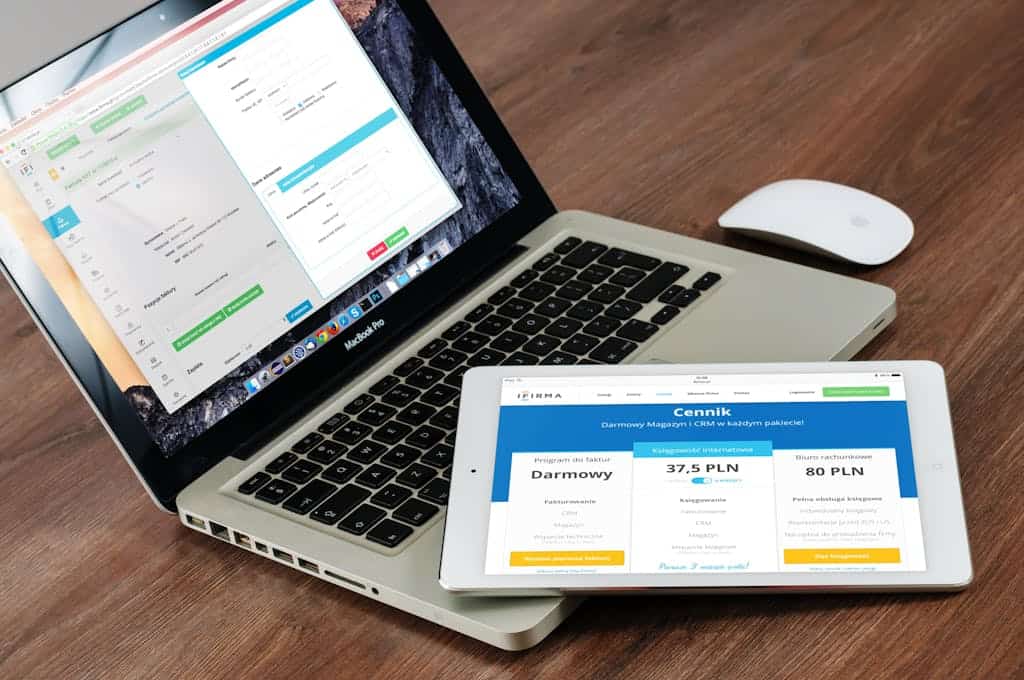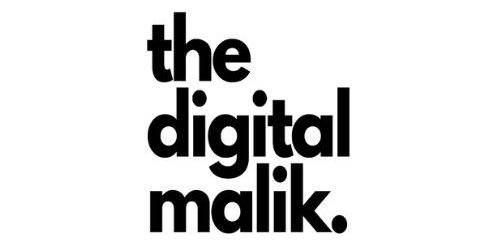Blog and Website KPIs: Effective Metrics for Success 2025

Just as the online world has evolved and continues to do so, so too have the measures that truly contribute to your online success.
Whether you’re running a personal blog, managing a business website, or both, which KPIs to track in 2025 can make the difference between going nowhere fast or actually developing your online presence.
This comprehensive guide will walk you through the best Website KPIs, introduce you to powerful tracking tools, and give you effective strategies being used today by successful digital business owners.
Let’s dive into what really delivers results in the competitive world of the internet today.
Key Takeaways
- Modern KPIs go beyond vanity metrics – Focus on engagement quality, conversion paths, and user experience indicators that actually predict business growth
- AI-powered analytics are game-changers – Tools like GA4’s enhanced insights and predictive metrics help you make smarter decisions faster
- Cross-platform integration matters more than ever – Your blog and website KPIs should work together to tell a complete story of your digital performance
- Real-time optimization beats quarterly reviews – Set up automated alerts and dashboards that help you respond to trends as they happen
- User experience metrics are the new SEO – Core Web Vitals and user satisfaction scores now directly impact your search rankings and conversion rates
Understanding Modern Blog and Website KPIs
I believe we’ve all been guilty of obsessing over vanity metrics at some point.
You know, those impressive-sounding numbers like “10,000 page views!” that make us feel good but don’t actually tell us if our content is working.
The reality is that modern digital success isn’t about how many people stumble onto your site – it’s about whether those people actually care about what you’re saying and take meaningful action because of it.
Think of it like hosting a party. Would you rather have 100 people show up and immediately leave, or 20 people who stay all night, have great conversations, and ask when your next event is?
That’s exactly why today’s smartest content creators focus on metrics that reveal genuine engagement and business impact rather than just traffic volume.
Essential Blog KPIs for 2025
Engagement-Focused Metrics
Modern blog success hinges on genuine engagement rather than surface-level views. Here’s what to track:
- Average Session Duration – Shows how compelling your content really is. Aim for 2+ minutes for most blog posts
- Scroll Depth – Measures how far readers actually get through your content. Tools like Hotjar can show you exactly where people drop off
- Return Visitor Rate – Indicates whether you’re building a loyal audience. A healthy blog should see 30-40% returning visitors
- Comment-to-View Ratio – High-quality engagement that signals content resonance and community building
- Social Share Velocity – How quickly content gets shared after publication, indicating viral potential
Content Performance Indicators
Understanding which content drives results helps you create more of what works:
- Topic Cluster Performance – Track how related posts perform together to build content authority
- Featured Snippet Captures – Monitor how often your content appears in Google’s featured snippets
- Internal Link Click-Through Rates – Shows how well you’re guiding readers through your content ecosystem
- Content Freshness Impact – Measure how updating old posts affects their performance
Critical Website KPIs That Drive Business Results
Conversion-Centered Metrics
Your website exists to drive specific actions. These KPIs reveal how well it’s performing:
- Conversion Rate by Traffic Source – Different channels convert differently. Knowing this helps you optimize your marketing spend
- Micro-Conversion Tracking – Newsletter signups, resource downloads, and social follows often predict macro-conversions
- Customer Acquisition Cost (CAC) – The total cost to acquire a customer through your website
- Average Order Value (AOV) – For e-commerce sites, this directly impacts profitability
- Cart Abandonment Rate – Critical for identifying friction points in your sales funnel
User Experience Excellence
Google’s algorithm updates have made UX metrics crucial for both SEO and conversions:
- Core Web Vitals – Loading speed, interactivity, and visual stability directly affect rankings
- Mobile Responsiveness Score – With mobile-first indexing, this isn’t optional anymore
- Navigation Efficiency – How many clicks it takes users to find what they need
- Error Rate – 404s and broken links hurt both user experience and SEO
Advanced Analytics and Tracking Strategies

Analytics can feel overwhelming when you’re staring at dozens of charts and numbers that all seem important.
But here’s what I’ve learned after years of helping businesses make sense of their data: the magic isn’t in having more metrics, it’s in having smarter ones.
Advanced analytics is like having a crystal ball for your business. Instead of just telling you what happened last week, modern tools can actually predict what your visitors are likely to do next.
Imagine knowing which new visitor is most likely to become a customer, or being able to spot problems before they hurt your business.
That’s not sci-fi anymore – it’s just good analytics strategy, and once you see how it works, you’ll wonder how you ever made decisions without it.
Leveraging AI-Powered Insights
The analytics landscape has transformed with AI integration. Here’s how to harness these capabilities:
Predictive Analytics Implementation
Tools like Google Analytics 4 now offer predictive metrics that help you anticipate user behavior:
- Purchase Probability – Identifies users most likely to convert
- Churn Probability – Helps you proactively engage users at risk of leaving
- Revenue Predictions – Forecasts based on current traffic and conversion patterns
Automated Anomaly Detection
Set up intelligent alerts that notify you when metrics deviate significantly from expected patterns. This helps you catch issues early and capitalize on unexpected wins quickly.
Creating Integrated Dashboard Systems
Multi-Platform Data Consolidation
Your KPIs should paint a complete picture across all digital touchpoints:
- Looker Studio Integration – Connect data from Google Analytics, Search Console, social media platforms, and email marketing tools
- Custom Calculated Fields – Create metrics that matter specifically to your business, like content ROI or engagement-weighted traffic
- Real-Time Monitoring – Set up dashboards that update automatically and alert you to significant changes
Team-Accessible Reporting
Design dashboards that different team members can understand and act upon:
- Executive Summaries – High-level KPIs that show overall performance at a glance
- Operational Dashboards – Detailed metrics for content creators, marketers, and developers
- Alert Systems – Automated notifications when metrics hit predetermined thresholds
Effective Tools and Platforms for 2025
You know what’s funny? I constantly meet business owners who are either using way too many analytics tools (and getting paralyzed by data overload) or trying to wing it with just basic Google Analytics and wondering why they can’t figure out what’s working.
The truth is, you don’t need a $500/month analytics stack to get meaningful insights – but you do need the right combination of tools that actually talk to each other.
Think of it like building a toolkit: you want quality over quantity, and each tool should serve a specific purpose in helping you understand your audience and grow your business.
Let me walk you through the ones that actually move the needle without breaking your budget.
Essential Free Tools
The latest version offers enhanced tracking capabilities:
- Enhanced Ecommerce Tracking – Detailed purchase journey analysis
- Cross-Platform Attribution – Understanding how users interact across devices
- Audience Insights – Deep demographic and behavioral data
Google Search Console
GSC is critical for understanding your organic search performance:
- Performance Reports – Click-through rates, impressions, and ranking positions
- Core Web Vitals – Direct feedback on user experience metrics
- Index Coverage – Ensures your content is being properly crawled and indexed
Premium Analytics Solutions
Hotjar for User Behavior
Visual insights that numbers alone can’t provide:
- Heatmaps – See exactly where users click, scroll, and spend time
- Session Recordings – Watch real user interactions to identify pain points
- Feedback Polls – Collect qualitative data directly from users
SEMrush for Competitive Intelligence
Understanding your competitive landscape:
- Competitor Content Analysis – See what’s working for others in your niche
- Keyword Gap Analysis – Identify opportunities you’re missing
- Backlink Monitoring – Track your link-building progress and opportunities
Influencer Marketing and Social Media KPIs
Here’s where things get interesting – and where a lot of businesses waste serious money. I’ve seen companies throw thousands at influencer partnerships because someone had a lot of followers, only to get zero actual sales or meaningful engagement. Sound familiar?
The problem isn’t influencer marketing itself – it’s that most people are measuring the wrong things.
Follower count is like judging a restaurant by how big the dining room is instead of how good the food tastes.
What really matters is whether that influencer’s audience actually trusts them enough to take action on their recommendations.
Once you start tracking the right metrics, influencer partnerships become one of the most predictable ways to grow your business.
Measuring Influencer Partnership Success
As influencer marketing matures, tracking the right metrics becomes crucial:
Engagement Quality Metrics
- Engagement Rate by Reach – More accurate than follower-based calculations
- Comments-to-Likes Ratio – Indicates genuine audience interaction
- Story Completion Rate – For Instagram and Facebook story campaigns
- Click-Through Rate to Your Website – The ultimate measure of campaign effectiveness
Attribution and ROI Tracking
- UTM Parameter Consistency – Properly track traffic from influencer content
- Promo Code Usage – Direct conversion attribution
- Brand Mention Sentiment – Quality of brand association
- Long-term Traffic Impact – How influencer campaigns affect ongoing organic traffic
Social Media Integration Strategies
Cross-Platform Performance Analysis
Different platforms serve different purposes in your marketing funnel:
- LinkedIn for B2B Lead Generation – Track professional engagement and lead quality
- Instagram for Brand Awareness – Focus on reach, brand mention, and aesthetic consistency
- TikTok for Viral Content – Monitor video completion rates and share velocity
- Twitter for Customer Service – Response time and satisfaction scores
Practical Implementation Guide
Okay, you’ve probably read plenty of articles about KPIs that left you feeling more confused than when you started.
Theory is great, but what you really need is a step-by-step plan that you can actually follow without needing a data science degree.
This is where the rubber meets the road. I’m going to break down exactly how to set up a KPI system that works for your specific situation – whether you’re running a solo blog, managing a team, or somewhere in between.
No fluff, no overwhelming spreadsheets, just a practical framework that helps you make better decisions starting this week.
Because honestly, the best analytics system is the one you’ll actually use consistently.
Setting Up Your KPI Framework
Step 1: Define Your Business Objectives
Before diving into metrics, clarify what success looks like for your specific situation:
- Revenue Goals – Direct sales, affiliate income, or service bookings
- Audience Building – Email subscribers, social followers, or community members
- Brand Authority – Industry recognition, speaking opportunities, or media mentions
- Content Impact – Educational value, problem-solving, or entertainment
Step 2: Choose Your Primary Metrics
Select 5-7 KPIs that directly relate to your objectives. More metrics don’t necessarily mean better insights – focus beats scattered attention.
Step 3: Establish Baseline Measurements
Document your current performance across all chosen metrics. This creates a foundation for measuring improvement and sets realistic expectations.
Step 4: Set Realistic Targets
Based on your baseline data and industry benchmarks, establish achievable goals for each metric. Consider seasonal fluctuations and growth trajectory.
Creating Actionable Reporting Cycles
Weekly Tactical Reviews
Focus on metrics you can influence with immediate actions:
- Content Performance – Which posts are trending, and what can you learn?
- Traffic Sources – Are any channels underperforming or overperforming?
- Conversion Funnels – Where are users dropping off, and why?
Monthly Strategic Analysis
Look at broader trends and patterns:
- Audience Growth Quality – Are new visitors engaging meaningfully?
- Content Topic Performance – Which subjects resonate most with your audience?
- Technical Performance – Site speed, mobile experience, and error rates
Quarterly Business Impact Assessment
Connect your KPIs to actual business outcomes:
- Revenue Attribution – Which content and channels drive the most valuable customers?
- ROI Analysis – What’s the return on your content and marketing investments?
- Strategic Pivots – Should you adjust your content strategy based on performance data?
Advanced Optimization Techniques
Once you’ve got your basic KPI tracking humming along, this is where things get really exciting.
It’s like the difference between learning to drive and becoming a race car driver – same basic principles, but now you’re optimizing for performance.
Advanced optimization is where you stop guessing and start systematically improving everything. Instead of wondering “I think this headline might work better,” you’ll know definitively which one converts 23% more visitors into subscribers.
It sounds technical, but it’s actually pretty straightforward once you understand the process. Plus, this is where you’ll see the biggest jumps in your results – the kind that make you wonder why you waited so long to get serious about testing.
A/B Testing for Continuous Improvement
Content Optimization Testing
- Headlines and Titles – Test different approaches to see what drives more clicks
- Call-to-Action Placement – Experiment with button locations and wording
- Content Length – Find the sweet spot for your audience’s attention span
- Visual Elements – Test different image styles, videos, and infographics
User Experience Testing
- Navigation Structures – Compare different menu organizations
- Page Layouts – Test sidebar vs. full-width content
- Loading Speed Optimization – Measure impact of technical improvements
- Mobile vs. Desktop Experience – Ensure consistency across devices
Personalization and Segmentation
Audience Segmentation Strategies
Not all visitors are the same. Create targeted experiences:
- New vs. Returning Visitors – Different content recommendations and calls-to-action
- Traffic Source Segmentation – Social media visitors might need different messaging than search traffic
- Geographic Targeting – Customize content for different regions or time zones
- Behavioral Segmentation – Group users by their interaction patterns and preferences
Future-Proofing Your KPI Strategy
Let me paint a picture for you: remember when everyone was obsessed with Facebook organic reach, and then the algorithm changed and suddenly businesses lost 90% of their visibility overnight?
Or when iOS 14 basically broke Facebook ads tracking and everyone scrambled to figure out attribution?
The digital world moves fast, and what works today might not work tomorrow.
But here’s the thing – while tactics change, smart strategy principles stay consistent. Future-proofing your KPI approach isn’t about predicting exactly what’s coming next (nobody can do that).
It’s about building a flexible system that can adapt to changes without losing sight of what really matters: understanding your audience and serving them better than anyone else.
Emerging Trends to Watch
Privacy-First Analytics
As cookies phase out and privacy regulations tighten, prepare for:
- First-Party Data Collection – Build direct relationships with your audience
- Server-Side Tracking – More accurate data collection methods
- Consent Management – Transparent data usage that builds trust
AI-Driven Content Optimization
Machine learning will increasingly help with:
- Content Personalization – Dynamic content based on user behavior
- Predictive Content Creation – AI insights into what topics will perform well
- Automated Optimization – Systems that adjust content and layout automatically
Building Sustainable Growth
Long-term KPI Evolution
Your metrics should evolve as your business grows:
- Early Stage – Focus on audience building and content quality
- Growth Stage – Emphasize conversion optimization and revenue metrics
- Maturity Stage – Track customer lifetime value and retention rates
Team Development and Training
Invest in your team’s analytical capabilities:
- Regular Training Sessions – Keep everyone updated on new tools and techniques
- Cross-functional Collaboration – Ensure different departments understand how their work affects key metrics
- Data-Driven Culture – Make analytics a natural part of decision-making processes
Real-World Success Stories
What I love about case studies, is that they cut through all the theory and show you exactly what happens when someone actually implements these strategies in the real world.
Not the sanitized, perfect scenarios you see in most marketing content, but genuine businesses with real challenges and constraints.
These aren’t unicorn stories about companies with unlimited budgets or magical overnight success. These are practical examples from businesses that started where you probably are right now – looking at their analytics, knowing they could be doing better, but not sure exactly how to make it happen.
What you’ll see is that the biggest wins often come from focusing on the fundamentals really well, not from complex hacks or secret strategies.
Case Study: Content-Driven B2B Growth
A software company transformed their blog from a traffic sink into a lead generation machine by:
- Focusing on Problem-Solving Content – Shifted from promotional posts to genuinely helpful guides
- Implementing Topic Clusters – Organized content around core business themes
- Optimizing for Intent – Targeted keywords that indicated buying intent
- Results: 300% increase in qualified leads from organic search within 8 months
Case Study: E-commerce Conversion Optimization
An online retailer doubled their conversion rate by:
- Mobile-First Redesign – Prioritized mobile user experience improvements
- Checkout Optimization – Reduced cart abandonment through simplified forms
- Personalized Product Recommendations – Used browsing data to suggest relevant items
- Results: Conversion rate increased from 1.8% to 3.6%, with 40% higher average order value
Taking Action: Your Next Steps
Alright, here’s where most people get stuck. You’ve read all this information, you’re excited about the possibilities, and then… you close the browser tab and get distracted by your inbox.
Sound about right? I get it. Information without action is just entertainment.
That’s why this section exists – to bridge the gap between knowing what you should do and actually doing it.
I’m going to give you a specific, week-by-week plan that takes the overwhelm out of getting started. No massive overhauls or complicated setups, just clear, manageable steps that build momentum.
Because the truth is, taking imperfect action beats perfect planning every single time.
Immediate Implementation Plan
Week 1: Audit and Setup
- Install or upgrade to Google Analytics 4
- Set up Google Search Console if you haven’t already
- Create a basic dashboard with your top 5 KPIs
Week 2: Baseline Establishment
- Document current performance across all metrics
- Set up automated reporting for weekly reviews
- Identify your biggest opportunities for improvement
Week 3: Optimization Begins
- Implement one A/B test based on your data
- Optimize your worst-performing content
- Set up alerts for significant metric changes
Month 2 and Beyond
- Expand your testing programs
- Integrate additional data sources
- Refine your KPI selection based on learning
Building Long-term Success
Remember that effective KPI tracking is a marathon, not a sprint. The most successful digital entrepreneurs consistently monitor their metrics, but they also stay focused on creating genuine value for their audience.
Your KPIs should guide your decisions, not consume all your creative energy.
Start with the fundamentals, measure consistently, and adjust your strategy based on what the data tells you.
Most importantly, never lose sight of the human beings behind those numbers – they’re the ones who ultimately determine your success.
Key Resources and Tools
Free Analytics Tools
- Google Analytics 4 – Comprehensive website analytics
- Google Search Console – SEO performance tracking
- Google Looker Studio – Custom dashboard creation
- Hotjar Basic – Limited heatmaps and recordings
Premium Solutions
- SEMrush – Competitive analysis and keyword research
- Hotjar Pro – Advanced user behavior insights
- ClearPoint Strategy – Advanced KPI management
- Ahrefs – Comprehensive SEO toolset
Learning Resources
- Google Analytics Academy – Free certification courses
- Digital Marketing Institute – Professional development programs
- Industry Blogs – Stay updated with latest trends and techniques
The digital marketing landscape will continue evolving, but the fundamental principle remains the same: measure what matters, act on insights, and always prioritize your audience’s experience.
With the right KPIs and tools in place, you’ll be well-equipped to build a thriving digital presence in 2025 and beyond.
Ready to transform your digital strategy? Start by implementing just one or two of these KPI frameworks this week. Small, consistent improvements compound over time to create remarkable results.
Final Thoughts : Your Digital Success Blueprint Starts Now
The data doesn’t lie – blogs that actively track their performance see 67% higher engagement rates than those flying blind.
Throughout this deep dive, we’ve decoded the metrics that separate thriving digital businesses from the ones left wondering why their content isn’t connecting.
Here’s what’s game-changing: smart measurement transforms guesswork into growth.
When you understand which content sparks conversations, drives conversions, and builds community, you’re not just creating – you’re strategically scaling.
The brands dominating digital spaces right now? They’re obsessed with their analytics, constantly testing, and never settling for “good enough.”
But here’s the reality check – your competitors are already doing this. While you’re debating whether to start tracking, they’re optimizing based on real user behavior data.
The window for getting ahead is narrowing, but it’s still wide open for those ready to act.
Your next 30 days should look like this:
Pick one primary metric (start with engagement rate), set up tracking, and commit to weekly reviews. The businesses that win aren’t necessarily the ones with the biggest budgets – they’re the ones with the clearest vision of what’s working.
Ready to transform your digital presence from a side project into a revenue-generating machine? The tools exist, the strategies are proven, and the opportunity is massive.
Your audience is waiting – don’t keep them waiting much longer.
Frequently Asked Questions (FAQs)
What metrics should I prioritize when starting out?
Focus on the “Big 3” that directly impact your bottom line: engagement rate (comments, shares, time on page), conversion rate (email signups, product purchases), and organic traffic growth. Tools like Google Analytics 4 and Hotjar can track these without overwhelming you with data. Most successful bloggers see measurable improvement within 6-8 weeks of consistent tracking.
How quickly can I expect to see results from implementing these strategies?
Here’s the honest timeline: Quick wins in 2-4 weeks (improved engagement through better headlines and CTAs), solid momentum in 2-3 months (noticeable traffic increases and audience growth), and significant business impact in 6-12 months (steady revenue streams and brand recognition). The key is consistent implementation, not perfect execution.
Which analytics tools give the biggest bang for my buck?
Start with this power combo: Google Analytics 4 (free, comprehensive), Google Search Console (free, essential for SEO), and Buffer or Hootsuite ($15-25/month for social scheduling). Once you’re generating revenue, upgrade to SEMrush or Ahrefs ($99+/month) for competitive intelligence. This progression costs less than most people spend on coffee monthly.
How do I know if my content is actually connecting with my audience?
Look beyond vanity metrics. High-converting content typically shows: 3+ minute average session duration, 15%+ engagement rate (comments/shares vs. views), and measurable actions (email signups, link clicks). If people are bookmarking, sharing with friends, or reaching out directly, you’ve struck gold. Use heat mapping tools to see exactly where people engage and drop off.
What’s the biggest mistake new bloggers make with analytics?
Tracking everything instead of what matters. Most beginners get overwhelmed by hundreds of available metrics and end up paralyzed by data. Focus on 3-5 KPIs that directly correlate with your goals. If you want email subscribers, obsess over conversion rates and traffic sources. If you want ad revenue, prioritize page views and session duration. Successful bloggers are ruthlessly focused, not data hoarders.






